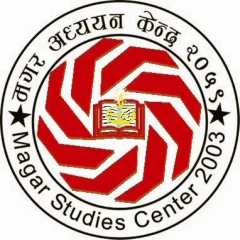Fellow’s Presentation- MAKAIAS
Topic: A MARGINAL CULTURE: THE MANGAR COMMUNITY IN THE EASTERN AND NORTHEASTERN HIMALAYAS
Presenter: Dr. Nandini Bhattacharya Panda, Fellow, MAKAIAS
External Expert: Prof. Ranjana Roy, Retd. Professor and Emeritus Fellow, Dept. of Anthropology, University of Calcutta
Date: 02.11.2012 Time: 3.30 pm
Venue: Azad Bhavan, Salt Lake
Rapporteur: Arpita Basu, Researcher, MAKAIAS
Nandini Bhattacharya’s presentation was concerned with the current processes of the cultural reconstruction and the cultural perceptions of the Mangar community in the Eastern and Northeastern Himalayas. The principal objective of the paper was to define this tribe with its distinct cultural traits and components. She observed that the Mangar community was an important part in this ongoing process of cultural reconstruction and rejuvenation. She argued that the process of cultural regeneration had opened up a vast array of imaginations in the quest for a newly formulated identity. Dr. Bhattacharya’s paper was an analysis of how culture had been playing a multifarious role in shaping a distinct ethnic identity for the Mangar community. She tried to trace the process primarily in the Indian context. Nandini described the Mangar community as one of the marginal, backward and depressed hill communities in India with a liminal existence in the dominant cultural milieu. She argued that the marginal hill communities had enriched the pluralistic, multi-dimensional and composite cultural heritage in India. But at the same time the Mangar community had encountered the challenging task to resist the overwhelming infiltration of the dominant cultural forms persisting over several centuries. She observed that in the process of this unequal cultural encounter, the marginal communities had lost their cultural traits and heritage components very rapidly; that the process of the cultural reconstruction must be placed in that background. She observed that the cultural reconstruction of the Mangar community had a complex linkage with the political and economic aspirations of the people. Her primary aim was to analyse, document and chart the process of restructuring and refashioning of the cultural traits of the Mangar community, so that they qualify themselves to become a tribal community of the region. She felt that the entire exercise of cultural reconstruction of the Mangar community involved a process of creating and recreating their history on the basis of popular imagination and memory along with an interesting blending of myth, legend and history. She observed that different postulations and assumptions had been produced towards the quest for an original homeland of the Mangars and their geo-historic identity. But all these arguments had been trying to negate the diasporic status of the Mangar community. She depicted that the study of popular myth and legend would be an important part of her project for the purpose of understanding the efforts of the Mangar community to construct, recreate and to some extent invent the historic past in order to create an autonomous cultural domain. Dr. Bhattacharya finally concluded that it was not her intention to argue that the aspiration to get scheduled tribe status and the economic incentives were the sole motivating factor behind the cultural reconstruction. Rather she highlighted that the new aspiration had initiated the process of cultural reconstruction. This presentation was a modest attempt to explore the cultural imagination of the Mangar community and to analyse whether the construction of a separate cultural identity might ensure material and spiritual security in the long run.
Discussion Session
The external expert Prof. Ranjana Roy congratulated the presenter for her brilliant presentation and challenging work on such a dispersed community. She gave certain extremely valuable comments, observations and insights for the betterment of the paper. Prof. Roy advised the presenter to consult a book titled People of Nepal by Dor Bahadur Bista. She expressed that the paper was focussed on the marginality of the Mangar Community and the reconstruction of the culture of the Mangar community. The honourable expert commented on the historical background of the word ‘tribe’, ‘caste’ etc. She also mentioned that the tribal people had tendency to Hinduize themselves and their originality is embedded in their ritualistic behaviour. She cited examples of the Mangar, the Lepcha and the Bhumija tribes. Prof. Roy commented that these tribal communities had attempted to de-tribalize in order to merge into the main stream community by converting into Christianity for economic gain from the British during pre-independence period whereas presently the Mangars are trying to re-tribalize to get the status of Scheduled Tribe instead of being Other Backward Classes. The honourable expert also advised the presenter to find out the practice of Sacred Grove concept and the original language of the Mangars. She advised the presenter to incorporate some empirical data in her presentation.
Comments and observations from the floor highlighted at the following issues:
Discussion was carried out on the similarity of the musical instruments used by the Mangars and those prevalent in the Pamir Region.
Question was raised on the theories of the origin of the Mangar Community.
A question was raised on the interrelationship between the Lepchas and the Mangars.
Discussion was carried on the cultural reconstruction of the Lepchas which was the model to the Mangar community for their cultural reconstruction.
A question regarding the presence of caste discrimination among the Mangars was raised
